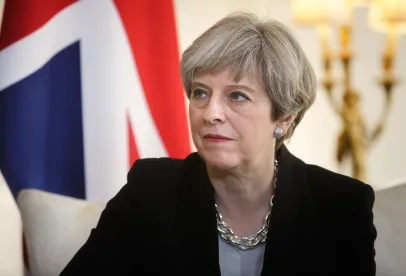Lord, what fools these mortals be – Shakespeare, Midsummer Night’s Dream
Last Friday should have been the day the UK left the EU. Instead the Westminster Parliament, in a rare Friday sitting, rejected the Withdrawal Agreement component of the Prime Minister’s Brexit deal by a substantial majority.
What has happened?
- Parliament has imposed “indicative votes” on possible Brexit outcomes on a reluctant Government, but then failed to produce a majority in favour of any outcome
- The Prime Minister has played her last card in trying to get her deal across the line, by saying she would resign when it was approved, but Parliament has again refused
- The EU extension of Article 50 to 22 May has formally lapsed, and the default is extension to 12 April, then no deal Brexit unless the UK has come up with a credible alternative plan
What next?
- The Prime Minister may have one last try to get her deal approved, but unless the Government can get the Northern Ireland Democratic Unionist Party (DUP) to support it, this looks unlikely to succeed
- Parliament will try again on 1st April (colloquially known as April Fool’s Day) to establish which alternative option could command majority support
- If both fail, the PM’s last big decision will be whether push through to a “no deal” Brexit on 12 April (against the now well established will of Parliament), or to accept an alternative Parliament supports and seek a short extension with re-negotiation of the Political Declaration on the future relationship, or to seek a much longer extension of the Article 50 process.
What does it all mean?
A prominent historian last week described the position as the greatest constitutional crisis in the UK in 300 years. Parliament cannot agree on anything, except what it doesn’t want. The Prime Minister’s last gambit looks unlikely to succeed, but has deprived her of the last vestiges of authority. The EU looks on with irritation, but also concern. Up to a million people marched in London in favour of a further referendum. A petition to revoke Article 50 gathered 6 million signatures. On 29 March, supposedly “Brexit Day”, angry demonstrators converged on Parliament, deprived of what they thought they had voted for. The public are increasingly fed up with the antics of politicians. Business is exasperated.
The options however remain the same: deal (though not necessarily the PM’s deal), no deal, or no Brexit. If Parliament is against both Mrs May’s deal and no deal, and against any alternative deal, the logic points to “no Brexit”. But only 184 MPs supported that option last Wednesday evening. Realistically, unless the PM can somehow bring the DUP round and give her deal a last try (if the Speaker will allow it), the options seem now to be a long extension to the Article 50 process (probably at least a year, and with the need to resolve the European Parliament elections question), or no deal Brexit on 12 April. “No deal” is clearly against the will of Parliament. It attracted only 160 MPs in favour last Wednesday, and the largest vote against of the evening (400 MPs). No one knows what Theresa May thinks, but if she decides “no deal” is the only way to deliver Brexit, there is quite a high likelihood of it happening. It could also happen simply because the UK and the EU fail to take the necessary decisions in time. The chances of a “no deal” Brexit have certainly increased over the past week, but it remains an unlikely outcome.
So does everything else. Downing Street has spent the weekend in agonizing deliberations. A number of pro-Brexit Cabinet Ministers, apparently backed by a letter signed by 170 Conservative MPs, have told the PM they will resign if she allows a move towards a softer Brexit, eg. including participation in a customs union, or allows a delay to Brexit beyond 22 May. A number of pro-EU Cabinet Ministers have been clear in private and in public that they will resign if she adopts “no deal” as Government policy. The Prime Minister’s objective to avoid splitting the Conservative Party looks increasingly difficult. There has been much talk of a General Election as a way out, but neither major party really wants one – it is hard to see how either could write a coherent manifesto – and there is a strong chance that it would not resolve anything. And most Conservative MPs are absolutely determined not to fight another election under Theresa May’s leadership.
What could happen?
The effective deadline for the UK Government and Parliament to decide a way forward is around 8/9 April. The European Council will meet on 10 April to assess the situation and decide whether to extend the Article 50 deadline beyond 12 April. It is impossible to predict what Governmental and Parliamentary manœuvres will lead to this week.
The Prime Minister may well try to get her deal through again, but with resolute opposition from the DUP (which is to do with keeping Northern Ireland’s place within the United Kingdom, not a particular Brexit concern), and with Labour MPs concerned that if the PM’s deal is approved it will be implemented by a new Prime Minister who favours a harder Brexit, this looks a forlorn hope. Given the impossibility now to make any significant changes to the Withdrawal Agreement element, it looks hard to see how the DUP could ever be brought to support it. Labour MPs would be more open if the Political Declaration was re-negotiated to provide more explicitly for a softer Brexit, but that would re-ignite opposition among Conservative MPs.
Among a wide range of other unlikely outcomes, the three most probable are:
- no deal Brexit on 12 April, possibly (if the European Council so decides) with a short extension (not beyond 22 May) so that both sides can finalise preparations
- if Parliament has settled a way forward, which the Government accepts, and the European Council believes credible, a short extension (again, not beyond 22 May) to revise the Political Declaration to take account of the new way forward, contingent on evidence of Parliament’s willingness to approve the Withdrawal Agreement
- a much longer (a year or more) delay to the Article 50 timetable, on EU terms (which are likely to include participation in the European Parliament elections in late May), which would be very likely to lead to a change of Conservative Party leader (and Prime Minister), and possibly a General Election. The chances of a referendum to confirm public support for whatever model of Brexit emerges are also growing.
Of these, the first and the third look more likely than the second – the standard of proof the European Council would need to see the second as credible looks hard to achieve in such volatile politics in Westminster.
Implications for our clients
The range of options, and timescales, three days after the UK should have left the EU, remains as wide as ever. We are still some way from knowing what future trading relationships will look like. But any final “no deal” preparatory steps should be taken between now and 12 April: it is not our predicted outcome, but the chances of it happening have increased.




 />i
/>i
